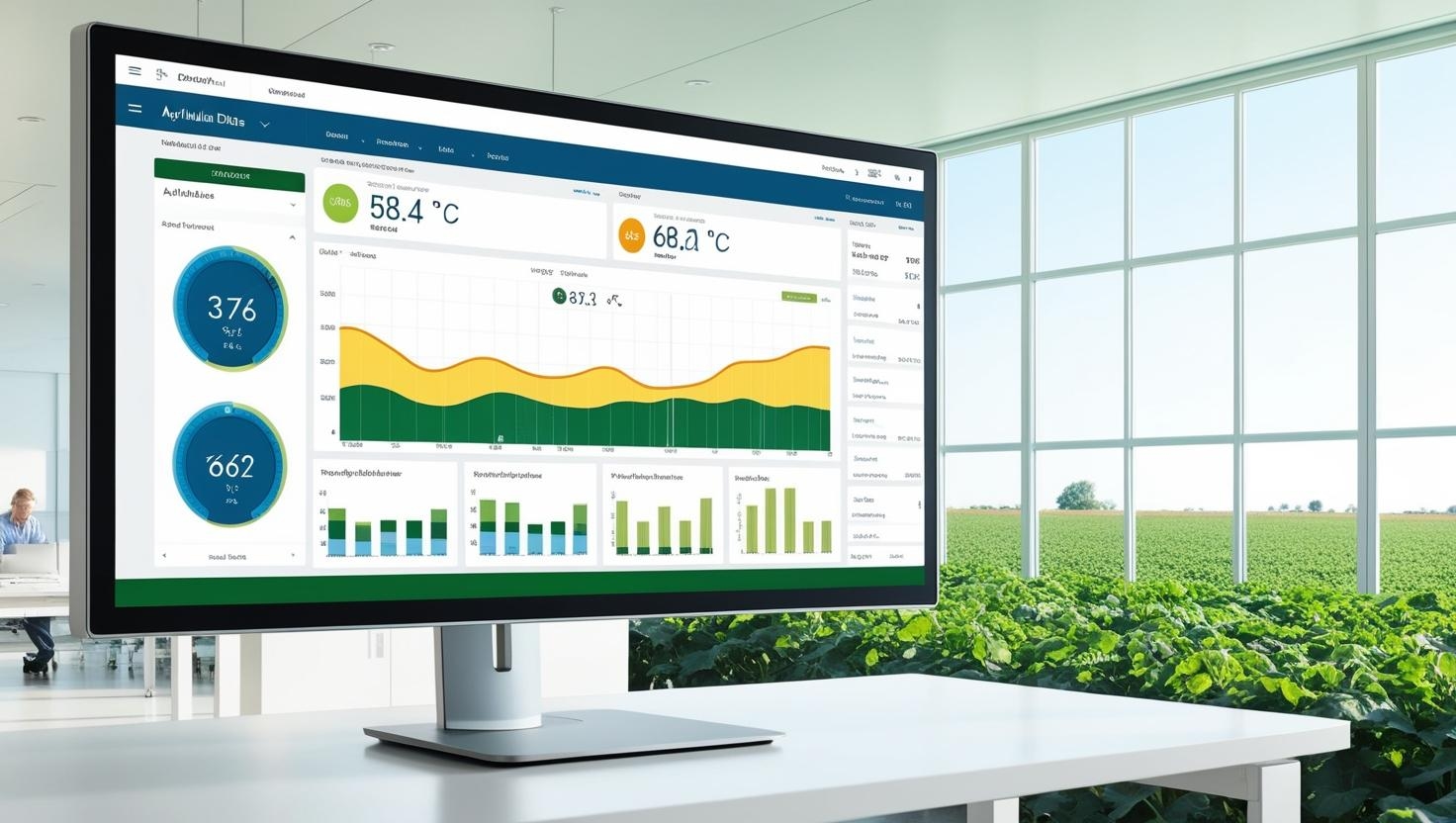The global population is expected to reach 9.7 billion by 2050, increasing food demand by 70% according to the United Nations. Yet, the amount of arable land is shrinking. To meet this demand, agriculture must become more efficient. Smart Farming Solutions powered by IoT (Internet of Things) are reshaping how farms operate. A key part of this transformation is remote monitoring using IoT dashboards.

These dashboards deliver real-time insights that help farmers optimize irrigation, reduce costs, and improve crop yields. With real-time dashboard development services, farmers now make data-driven decisions faster and more accurately.
What Is Remote Monitoring in Agriculture?
Remote monitoring in agriculture uses IoT sensors and connected devices to track environmental and operational conditions. Data collected from soil, water, air, and machinery is visualized in user-friendly dashboards. Farmers can access this information through mobile phones, tablets, or computers.
Key Components:
IoT Sensors: Measure soil moisture, temperature, humidity, and pH levels.
Connectivity: Uses 4G, LPWAN, LoRaWAN, or satellite networks to transmit data.
Cloud Platforms: Store and process large volumes of sensor data.
Dashboards: Visual interfaces that display data trends and alerts.
The Role of IoT Dashboards in Smart Farming
IoT dashboards are the control panels of smart agriculture. They aggregate data from multiple sources and display it in real-time. A well-designed dashboard can show weather predictions, irrigation schedules, soil moisture levels, and even equipment health.
Core Functions of IoT Dashboards:
Function | Description |
|---|---|
Real-time Monitoring | Displays live sensor data across fields |
Alerts and Notifications | Sends warnings for anomalies like overwatering or pest outbreaks |
Data Visualization | Graphs and charts show trends in crop and environmental data |
Historical Data Review | Helps with decision-making and future planning |
Remote Control | Enables adjusting irrigation or machinery from anywhere |
How Smart Farming Solutions Use Dashboards
Smart Farming Solutions integrates IoT dashboards to simplify operations and boost productivity. Below are key use cases where dashboards prove critical.
1. Soil and Crop Monitoring
Sensors track soil pH, moisture, and nutrient levels. Dashboards display this data, helping farmers apply the right fertilizer and water.
Benefits:
Prevents over-fertilization
Ensures consistent soil moisture
Supports healthy crop growth
2. Irrigation Management
Water is a limited resource. IoT dashboards provide real-time water usage stats. Farmers can schedule irrigation based on actual need.
Impact:
Reduces water waste
Saves power and energy
Prevents under- or over-irrigation
3. Weather Tracking
Dashboards integrate weather APIs to show forecasts alongside field data. This helps plan planting and harvesting schedules.
Advantages:
Reduces crop damage risk
Improves yield prediction
Enhances the timing of pesticide application
4. Livestock Monitoring
Wearable sensors for cattle track movement, temperature, and feeding habits. Data is displayed on dashboards.
Helps with:
Detecting illness early
Monitoring reproduction cycles
Managing feeding schedules
5. Equipment Monitoring
Dashboards also track tractors, pumps, and drones. Sensors detect vibrations, fuel levels, and wear.
Benefits include:
Avoiding unexpected breakdowns
Lowering maintenance costs
Extending equipment life
Benefits of Real-Time Dashboard Development Services
Investing in real-time dashboard development services allows agriculture stakeholders to get systems tailored to their specific needs. Dashboards can be customized based on farm size, crop type, and equipment setup.
Key Advantages:
Custom Interface Design: Only the most important metrics are shown.
Multi-Device Support: Dashboards work on mobiles, tablets, and desktops.
Data Security: Role-based access and encryption ensure data privacy.
Integration Ready: Easily connects with ERP, CRM, or GIS systems.
Future of IoT Dashboards in Agriculture
As 5G, edge computing, and AI become more common, IoT dashboards will offer deeper insights with faster response times.
Key Trends to Watch:
Edge Computing: Reduces data latency by processing information on-site.
AI Integration: Enables smarter decisions with pattern recognition and forecasting.
Interoperable Systems: Multiple farms and systems can share and compare data.
Conclusion
Remote monitoring using IoT dashboards is transforming agriculture from reactive to proactive. These dashboards help farmers monitor soil, crops, livestock, and equipment in real-time. With accurate data and timely alerts, farmers can make informed choices that improve productivity and reduce waste.
By using Smart Farming Solutions and real-time dashboard development services, agriculture is becoming more sustainable and resilient. The future of farming is connected, data-driven, and efficient.
